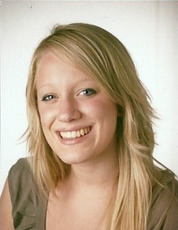Research Area Simulation - S2:Mean-field modeling
Thermomechanical mean-field modeling of CoDiCoFRTS
Advisors: Böhlke (ITM), Wood (UWO)
The objective of the second generation is the anisotropic thermomechanical modeling of SMC composites on the macroscale. The micro mechanical structure is taken into account by microstructure tensors describing, e.g., the orientation distribution. The material parameters (stiffness, thermal expansion coefficient, thermal capacity, thermal conductivity, failure surface) are expressed linearly in terms of these fiber orientation tensors. Information about the fiber orientation tensor is taken from micro-CT data (C2) or mold flow simulations (D1). Based on the results of the first generation, the mechanical investigations are refined and enhanced by thermomechanical coupling (in collaboration with the PostDoc) and damage (collaboration with S1 and S3). The thermomechanical material parameters are determined by experiments with a dilatometer and by differential scanning calorimetry. Experiments with DMA and an electromechanical biaxial testing device allow to investigate the thermomechanical material behavior especially regarding anisotropic damage phenomena. The focus of the damage investigation on the macro scale will lie on the stiffness degradation and on the change of the failure surface. As a prerequisite for the biaxial investigations, an additional focus will lie on the development of the cruciform specimen design appropriate for the biaxial testing, especially regarding the damage investigations (C3, T4). Continuing the investigations of the first generation of S2, a specimen design with CoFRP reinforcements on the specimen’s arms will be developed. Furthermore, 2D DiCoFRTP will be analyzed in order to prepare the research of the third generation.
Figure: Cuciform specimen for biaxial-tensile testing and corresponding FEM results.

